Smoked salt beef is a cured and smoked beef product, typically made from brisket, that combines salt curing with wood smoking to create a rich, smoky flavor and chewy texture. It is commonly used in sandwiches, soups, stews, and charcuterie boards for its distinctive taste. According to the USDA Food Safety and Inspection Service, smoked meats should be stored at 40°F (4°C) or below to prevent bacterial growth.
Smoked salt beef differs from regular salted beef like corned beef because it undergoes a smoking process after curing. Corned beef is brine-cured with spices but not smoked, resulting in a different flavor profile and texture. Smoked salt beef has a more complex, smoky depth due to the smoking method, which can be cold-smoked (for tenderness) or hot-smoked (for full cooking and stronger flavor).
Why You Should Try Smoked Salt Beef
- Unique Flavor Profile: The combination of salt and smoke creates a bold, savory taste that enhances both simple and complex dishes.
- Versatile Ingredient: Works well in sandwiches, soups, stews, as a seasoning for grilled meats, or on charcuterie boards.
- Food Safety Benefits: Properly smoked and cured beef has a longer shelf life than fresh meat when stored correctly, reducing food waste.
- Pairing Compatibility: Complements bold spices like paprika, garlic, and cumin, and pairs well with acidic ingredients like vinegar or citrus.
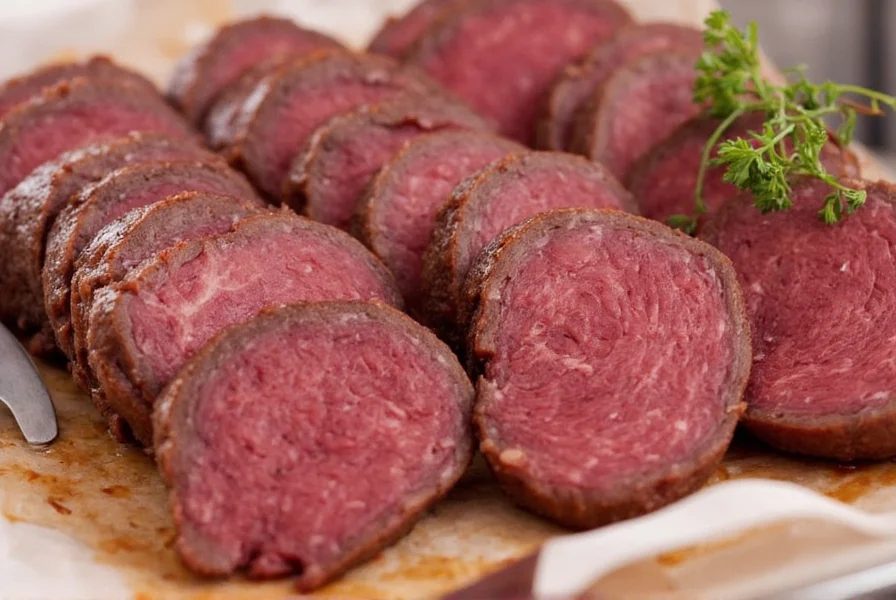
How to Use Smoked Salt Beef
1. In Sandwiches
Add thin slices of smoked salt beef to sandwiches with sharp cheddar cheese, pickles, and a mustard-based spread. For optimal flavor, use within 3 days of opening the package. Example: A classic smoked salt beef sandwich on rye bread with horseradish sauce.
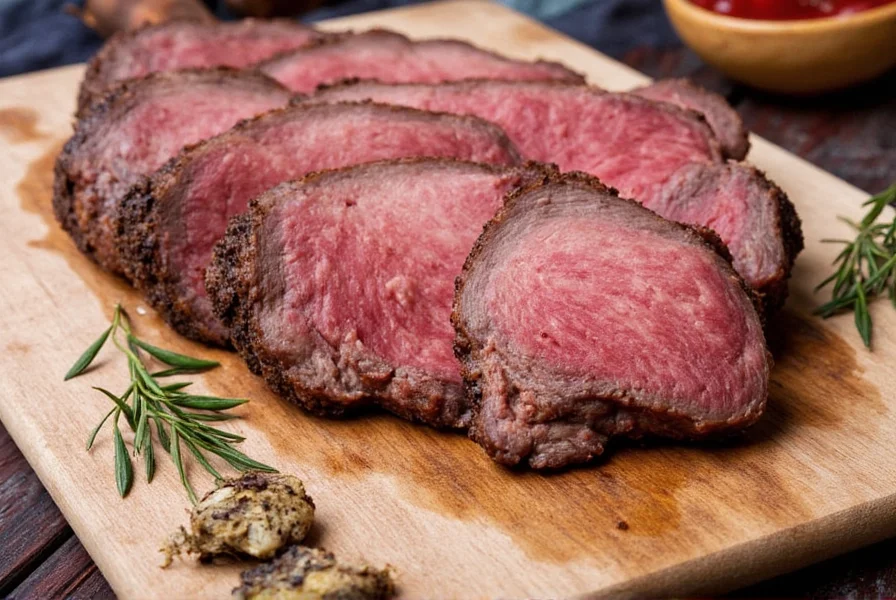
2. In Soups and Stews
Add 2-3 thin slices to soups or stews during the last 15-20 minutes of cooking. This releases umami flavor without overcooking. For best results, use in hearty dishes like beef stew or tomato soup.
3. As a Seasoning
Crush or finely chop smoked salt beef and mix with olive oil, black pepper, and herbs to create a rub for meats or vegetables. Use sparingly—1 teaspoon per serving—due to its intense saltiness. Ideal for grilling or roasting chicken or root vegetables.
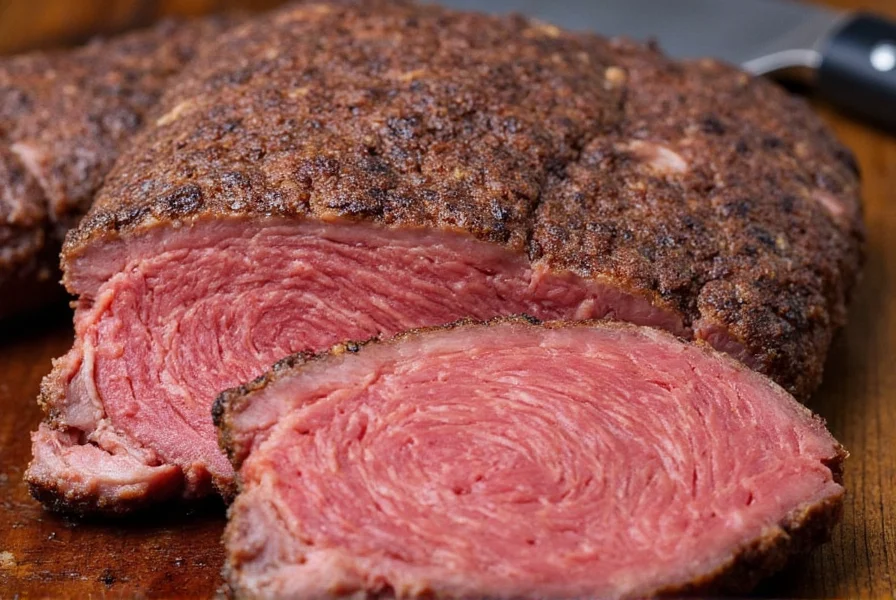
4. On Charcuterie Boards
Include smoked salt beef alongside aged cheeses, olives, and crusty bread. Slice thinly and arrange in a fan shape for visual appeal. Pair with sweet elements like fig jam to balance the saltiness.
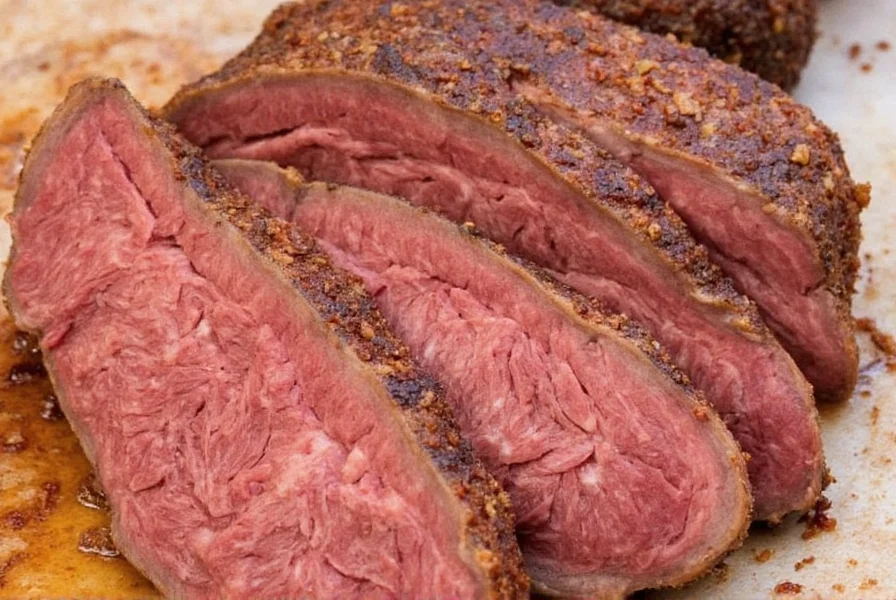
Buying Guide
When purchasing smoked salt beef, prioritize food safety and quality. Always check for USDA certification and follow storage guidelines to ensure freshness.
| Feature | Importance | Recommendation |
|---|---|---|
| Source | High | Choose brands with USDA certification or trusted butchers; avoid unknown suppliers |
| Smoking Method | Medium | Cold-smoked for tender texture (ideal for sandwiches); hot-smoked for stronger flavor (best for stews) |
| Packaging | High | Look for vacuum-sealed packages with clear expiration dates and storage instructions |
| Use Case | Medium | Thin slices for sandwiches; thicker cuts for stews or seasoning |
Reputable brands include Savory Smoke Co., Smoke & Salt Provisions, and Heritage Cured Meats. Always verify USDA certification on packaging to ensure safety standards are met.
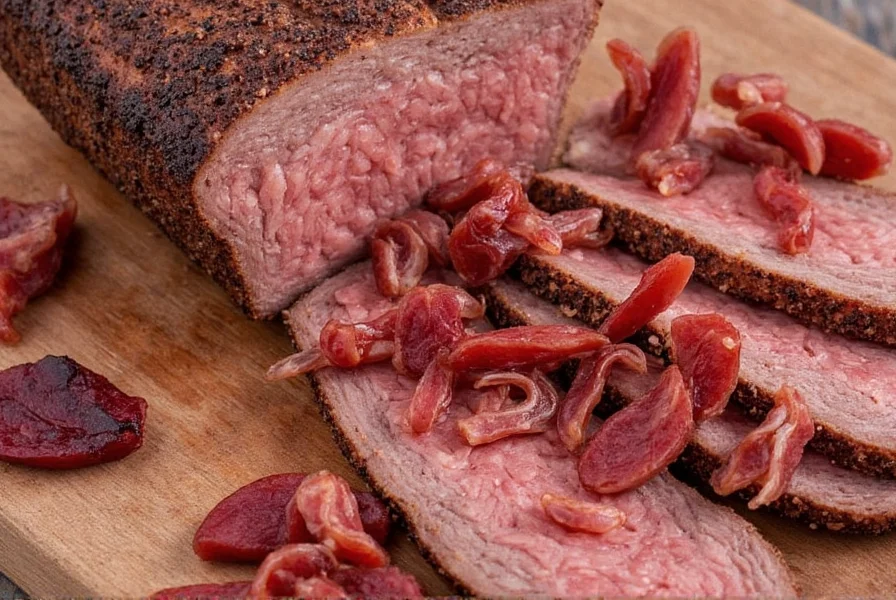
Tips and Tricks
- Storage Guidelines: Store unopened packages in the refrigerator at 40°F (4°C) or below. Once opened, consume within 5 days for best quality.
- Use in Small Amounts: Due to high salt content, start with 1-2 slices per serving and adjust to taste.
- Pairing Recommendations: Combine with acidic ingredients like lemon juice or vinegar to balance saltiness, or with sweet elements like honey for contrast.
- Food Safety Note: Never leave smoked salt beef at room temperature for more than 2 hours. If in doubt, discard to prevent foodborne illness.
- Freezing Option: For long-term storage, freeze in airtight containers for up to 3 months, though texture may slightly change.
Smoked salt beef offers a unique blend of saltiness and smokiness that adds depth to dishes while meeting USDA food safety standards when handled properly.
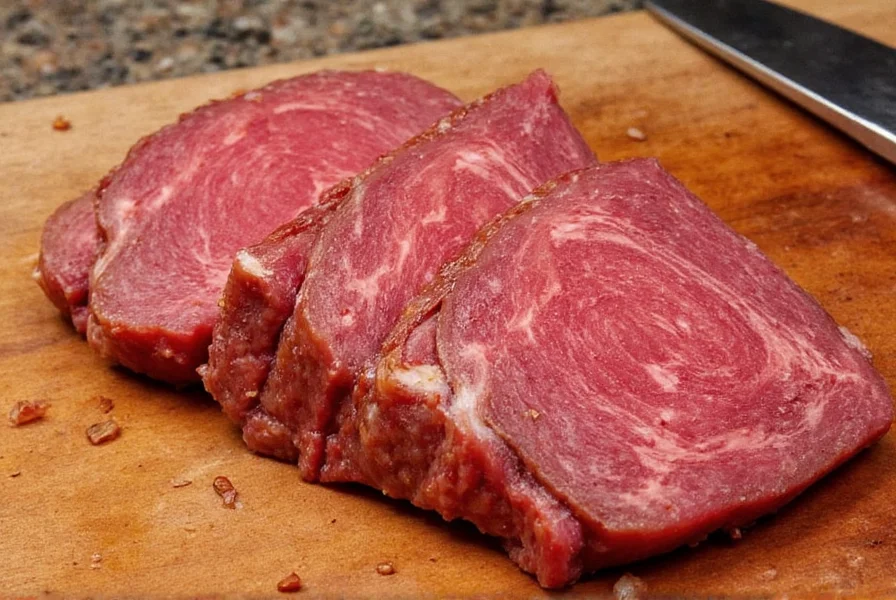
Frequently Asked Questions
What is the difference between smoked salt beef and corned beef?
Smoked salt beef is cured with salt and then smoked, giving it a distinct smoky flavor. Corned beef is brine-cured with spices but not smoked. Smoked salt beef has a chewier texture and more complex flavor due to the smoking process. According to USDA guidelines, both should be stored at 40°F (4°C) or below.
How long does smoked salt beef last?
Unopened, vacuum-sealed smoked salt beef lasts 2-3 weeks in the refrigerator at 40°F (4°C) or below. Once opened, consume within 5-7 days. For longer storage, freeze for up to 3 months, though texture may slightly change.
Can I make smoked salt beef at home?
While technically possible, home production is not recommended due to food safety risks. Improper curing or smoking can lead to bacterial growth like botulism. The USDA advises purchasing from certified suppliers to ensure safety standards are met.
Is smoked salt beef the same as pastrami?
No. Pastrami is typically made from beef navel, cured with a complex spice mix including garlic and pepper, and steamed after smoking. Smoked salt beef uses a simpler salt cure and is smoked without steaming, resulting in a leaner, saltier product with a different texture. Both should be stored at 40°F (4°C) or below per USDA guidelines.
How should I store smoked salt beef?
Unopened: Store in refrigerator at 40°F (4°C) or below in original vacuum-sealed packaging. Once opened: Wrap tightly in plastic wrap or store in an airtight container in the refrigerator. Consume within 5 days. Never store at room temperature for extended periods to prevent bacterial growth.
Can I use smoked salt beef in vegetarian dishes?
No, smoked salt beef is a meat product. For vegetarian alternatives with smoky flavor, use smoked salt or smoked paprika. These provide similar taste notes without meat and meet vegetarian dietary requirements.
Conclusion
Smoked salt beef is a versatile, flavorful ingredient that enhances dishes while meeting USDA food safety standards when handled properly. Its smoky depth works well in sandwiches, soups, and charcuterie boards, but always follow storage guidelines to ensure safety. For the best experience, purchase from certified suppliers and use sparingly due to its intense saltiness.

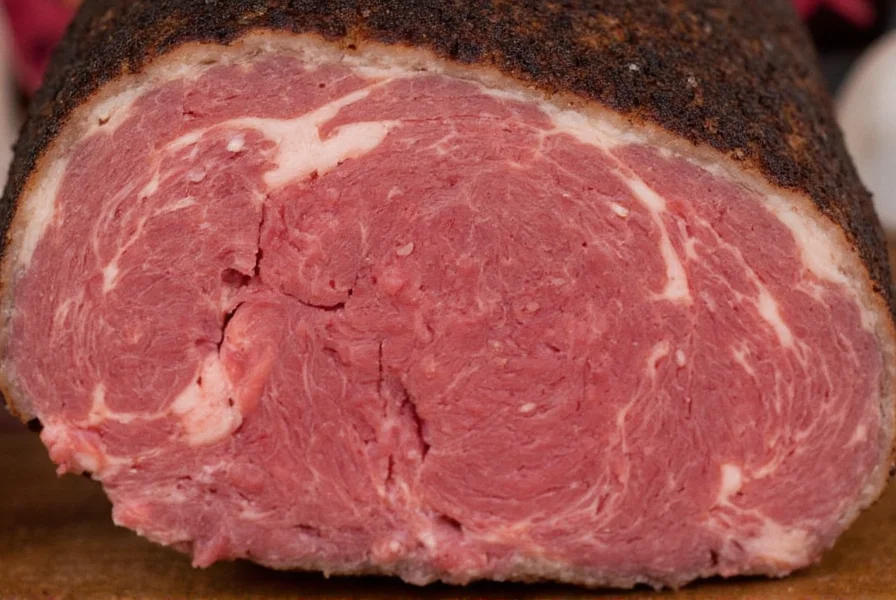









 浙公网安备
33010002000092号
浙公网安备
33010002000092号 浙B2-20120091-4
浙B2-20120091-4